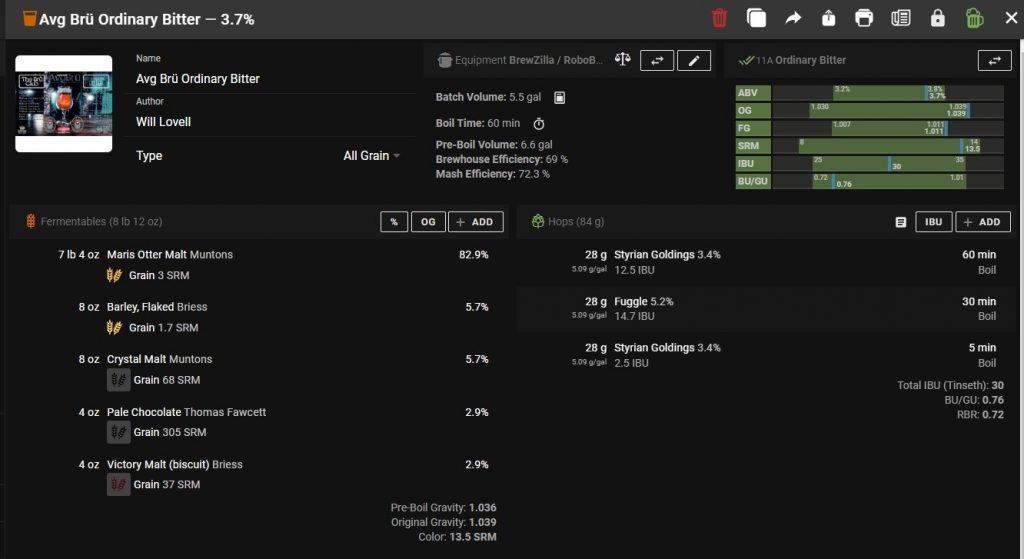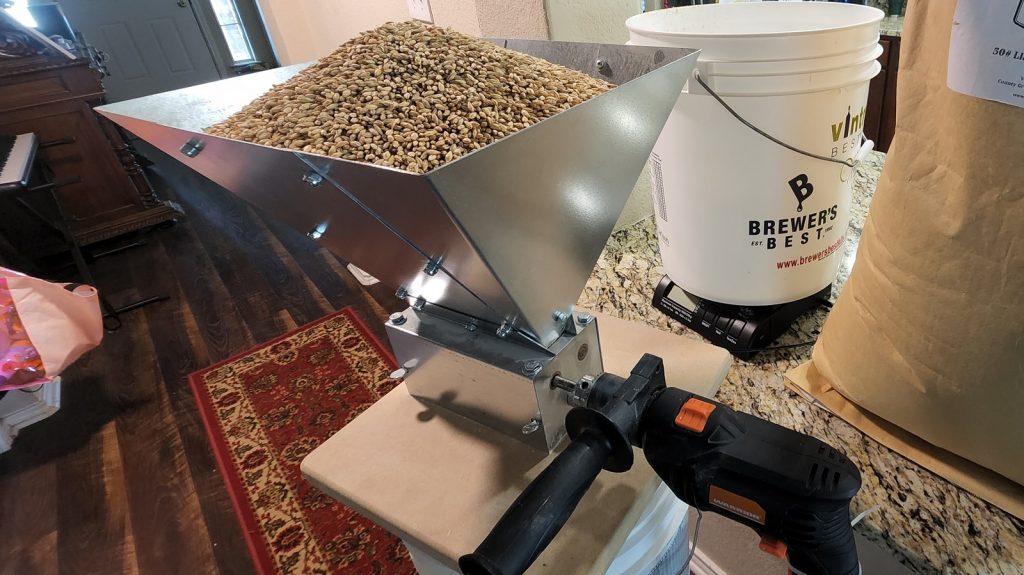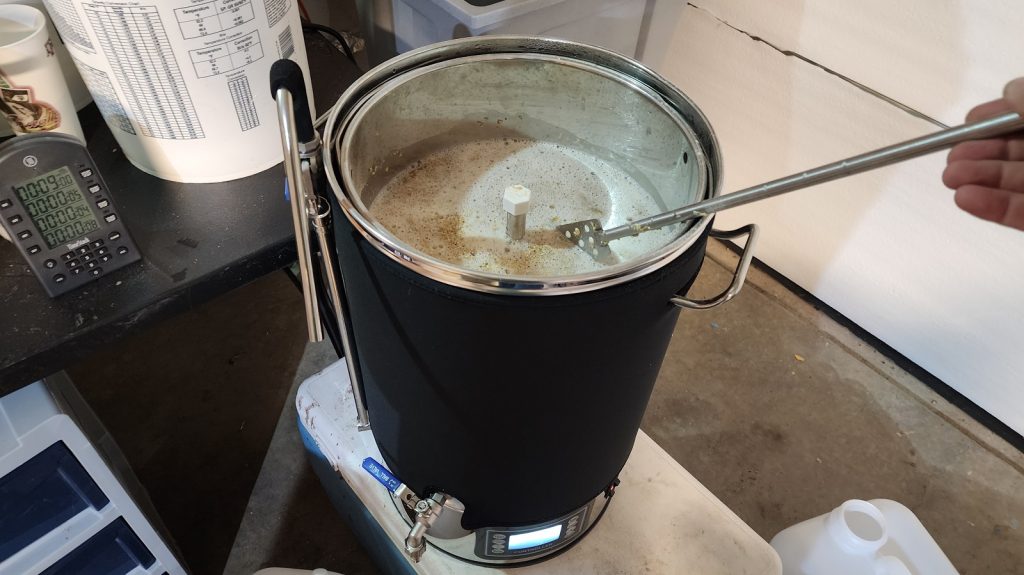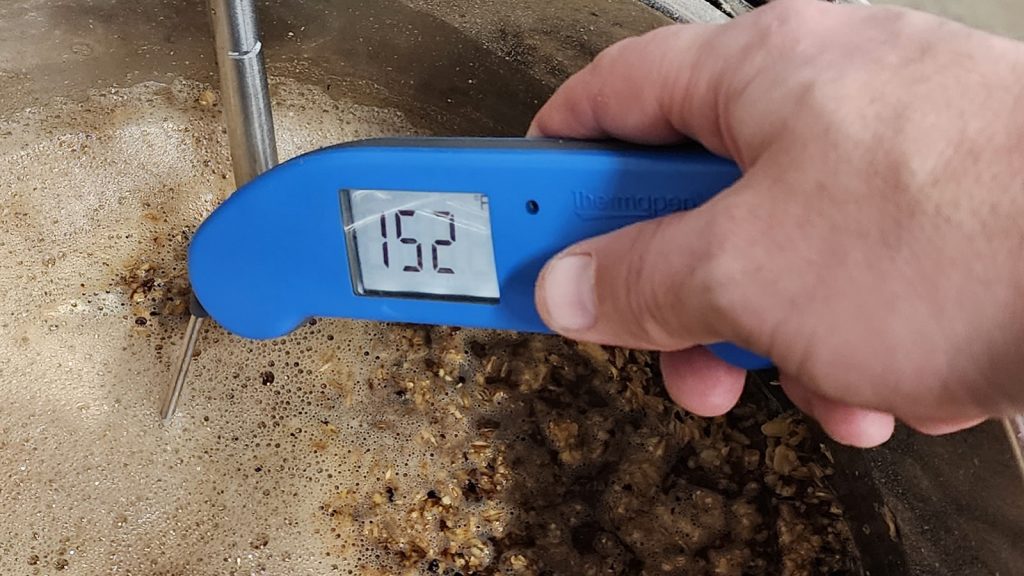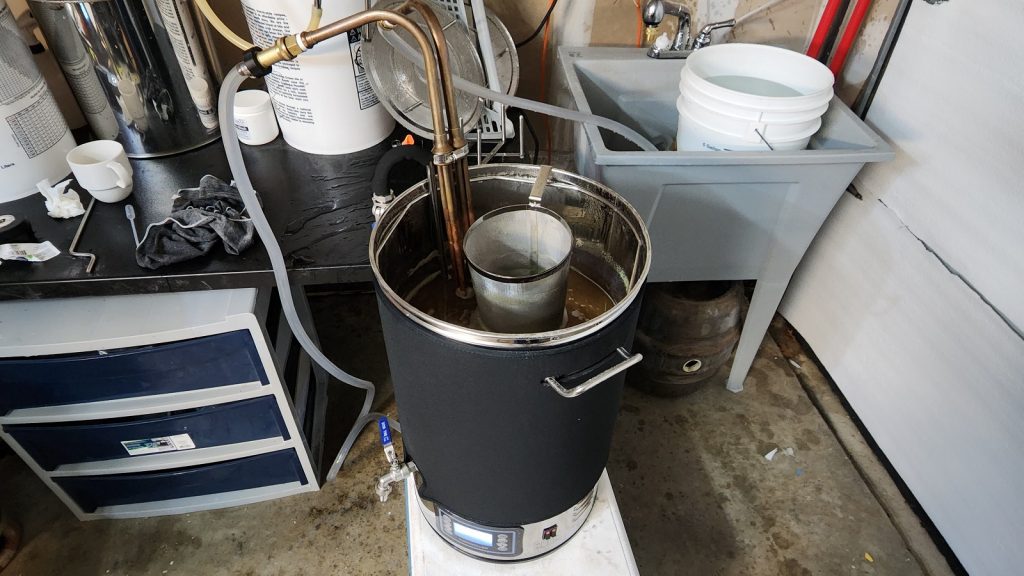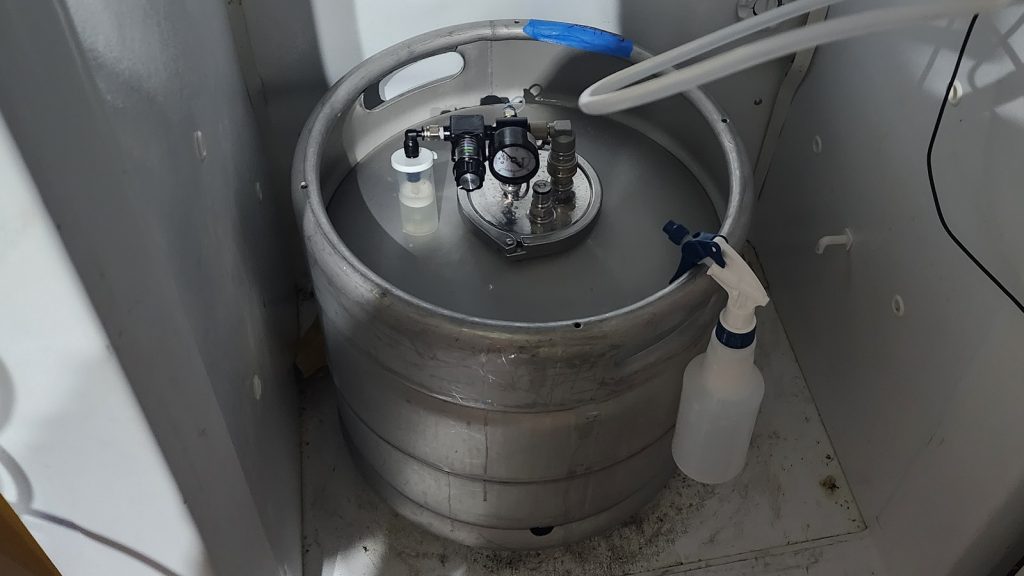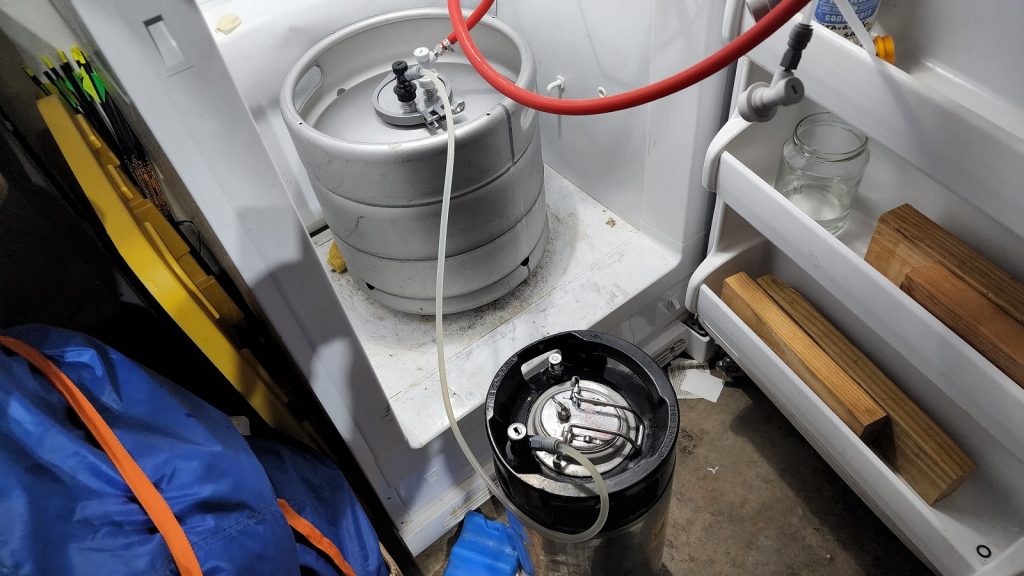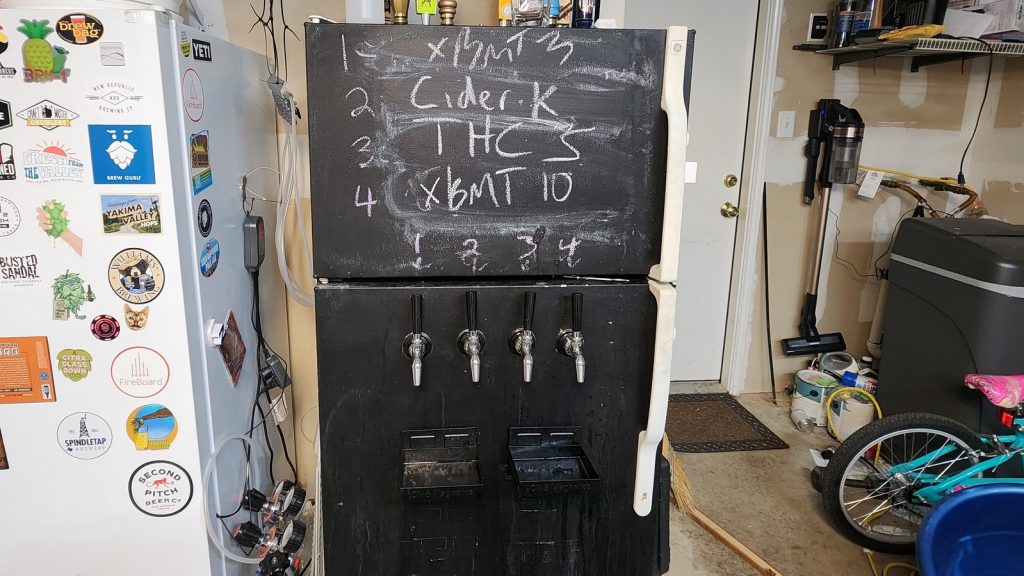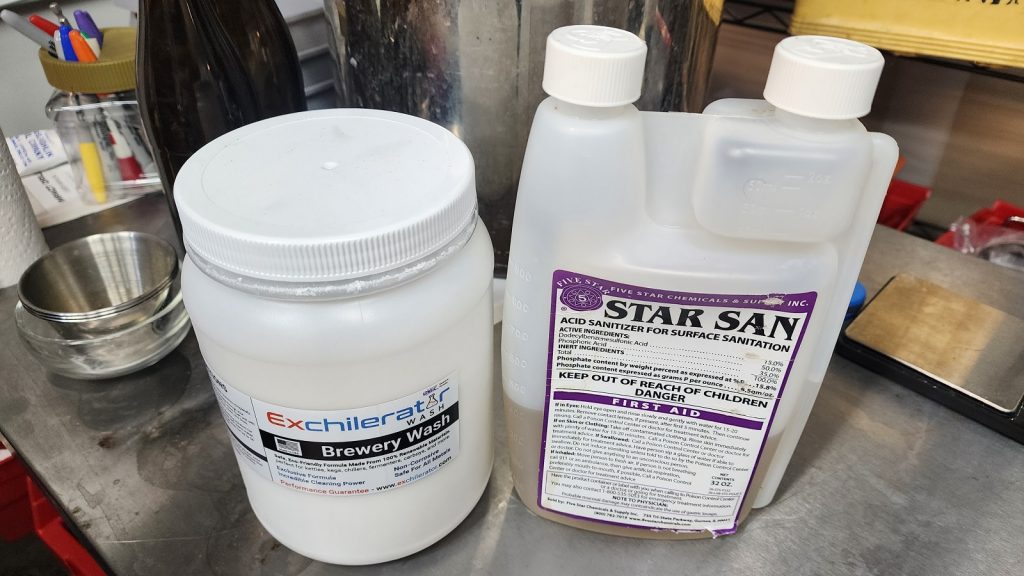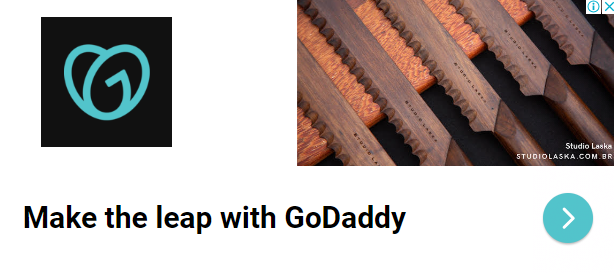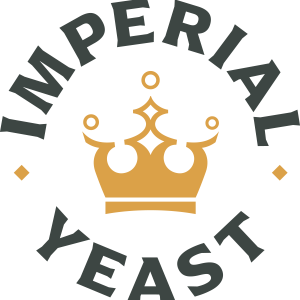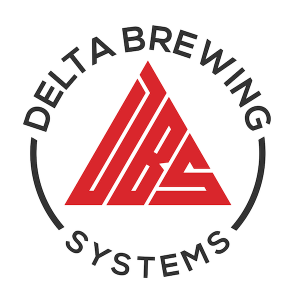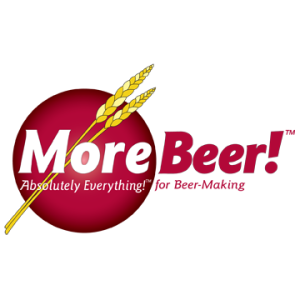 Born and raised in Northeast Texas, Will earned a Bachelor’s Degree in Computer Engineering from Texas A&M University in 2006 then bounced around the world due to his wife being in the Army at the time. After settling in San Antonio, TX, Will and his wife built a family with two kids. During the day, Will works in IT as a Systems Administrator, though he has been moonlighting as an involved homebrewer since 2011 and, in addition to his involvement with Brülosophy, has served as the event coordinator for The Brü Club since 2021.
Born and raised in Northeast Texas, Will earned a Bachelor’s Degree in Computer Engineering from Texas A&M University in 2006 then bounced around the world due to his wife being in the Army at the time. After settling in San Antonio, TX, Will and his wife built a family with two kids. During the day, Will works in IT as a Systems Administrator, though he has been moonlighting as an involved homebrewer since 2011 and, in addition to his involvement with Brülosophy, has served as the event coordinator for The Brü Club since 2021.
| ABOUT WILL |
How did you get into brewing?
I’ve been a beer enthusiast for a long time with some of my favorite styles being Belgian and British ales. When my wife, who was formerly a veterinarian in the US Army, got stationed at Naval Station Guantanamo Bay, it became difficult to obtain imported beers, so she gifted me a homebrewing kit for Christmas one year. My first batch being less than desirable, I picked up John Palmer’s How To Brew and eventually made friends other homebrewers, both of which added to my joy of the hobby. I also really love the marriage of science and creativity that goes into brewing a great batch of beer.
What was your first batch and how did it turn out?
My first batch was supposed to be an American Amber Ale made with extract and steeping grains. While the kit included decent tips on how to make the beer, it didn’t really go into detail or provide the necessary instructions on proper cleaning and sanitization. While beer was technically the end result, it ended up being a contaminated mess with a flavor reminiscent of sour green apples, which I eventually blended with Guinness for Sour Apple Snake Bites. I bought some StarSan after that batch and things went uphill from there.
How did you get involved with Brülosophy?
I’d been a big fan of Brülosophy for most of the time I’ve been brewing and ended up joining The Brü Club (TBC) soon after it was formed in 2019. About a year into Covid, a group of fellow TBC members started talking about revamping things, and I expressed interested in helping out, which ultimately led to me being a part of the leadership team. After having a couple articles published as a part of the TBC xBmt Series, Marshall and I began talking about my interest in contributing on a more formal level; when I broached the subject with my wife, she pointed out that I was already doing this stuff for fun anyway, so why not make it official. Who was I to argue?
What xBmt has surprised you the most?
The most surprising xBmts to me have been the ones focused on water chemistry. During my first few years of brewing, I embraced the whole “if it’s good enough to drink, it’s good enough to brew with” concept. It wasn’t until I moved to San Antonio, where the water is extremely hard, that I realized I needed to take things a bit more seriously, and the results of numerous xBmts not only validated this decision, but helped demystify water chemistry for me.
Have the xBmts influenced your current brewing perspectives?
A number of xBmt results have influenced my perspectives and even led me to adapting my own brewing methods. While I fully believe that a single data point should never be taken as gospel, there have been some fascinating trends, like the fact tasters struggle to tell apart lagers fermented with lager yeast at widely disparate temperatures, which just floors me. I was hesitant to brew lagers for a long time because I didn’t have the dedicated equipment required to make them, but those xBmt results gave me the courage to finally give it a shot, and I’m so glad I did! The findings on cold-side oxidation have been very interesting as well, ultimately influencing me to adopt various methods to ensure my beer stays as unexposed to oxygen as possible.
What are your 3 favorite styles of beer?
Czech Amber Lager
I love all versions of amber lager including Vienna Lager and Märzen, but in my opinion, Czech Amber Lager takes the cake. I love the blend of toast and light caramel malt flavor with classic Saaz hops and clean fermentation character.
Munich Helles
I brew Helles at least a couple of times of year and I’m always amazed at the complexity that can be achieved from such clean and delicate style. Not only does this classic German style pair well with most food, but it goes down real easy in the Texas heat.
American IPA
While I tend to prefer crisp and clear varieties of IPA over their hazy counterparts, I enjoy exploring the broad category that is American IPA. In the years I’ve been brewing, I’ve come to realize I prefer those with some malt backbone and tend to use a touch of Crystal or Munich malt in my own recipes.
What are your favorite ingredients?
Malt: TexMalt Llano Pilsner malt
I keep Pilsner malt on hand at all times and often use it in place of pale malt for various styles of ale, as I appreciate the light cracker character it imparts to beer. Over the last year, I’ve been using TexMalt’s Llano Pilsner, which I feel offers more depth of flavor that includes a slight doughy note along with a subtle honeysuckle sweetness. It’s really great stuff!
Hops: Amarillo
Amarillo is one of those hop varieties that, despite its age, continues to impress me with its perfect blend of floral and citrus notes. Whether combined with more modern pungent varieties or used on its own, Amarillo is a workhorse that I make sure to always have on-hand.
Yeast: Imperial Yeast L17 Harvest
In my experience, L17 Harvest seems to enhance malt characteristics in lager styles while maintaining a clean overall profile, whether fermented cool or warm. I really love what this yeast brings to the table and have found myself reaching for it more often than not when making lagers.
What’s your desert island beer?
This is a tough one that I go back and forth on a lot. Today, I would say it is the old-school Sierra Nevada “Green Label” Pale Ale, a classic that has definitely stood the test of time. Ask me again next year and my answer may very well be different.
What music do you listen to while brewing?
Robert Earl Keen, Charlie Robison, Johnny Cash, Trampled by Turtles, Max Stalling, Cory Morrow, Jason Boland, John Prine, Steve Earle, Pat Green, Aaron Watson, Turnpike Troubadors. Basically, whatever Texas country artists come up on my playlist. I also have a TV in my garage and enjoy catching up on Austin City Limits when I’m brewing, though during football season, you’ll usually catch me disappointedly watching Texas A&M Aggies or Dallas Cowboys games.
What else do you enjoy doing besides brewing?
I really enjoy traveling! Whether it’s in my own state or on another continent, experiencing new places and cultures is something I find very rewarding, especially when I do it with the people I love. I also enjoy spending time in the outdoors and try to squeeze in as much camping, hiking, hunting, and fishing as I can.
If you could go back, what brewing advice would you give yourself?
Get into kegging sooner! I spent a lot of years bottling and it honestly kept me from brewing as much as I wanted to because the process sucks. If I would have gotten into kegging earlier on, all the time I spent washing bottles and waiting on my beer to carbonate would have been spent honing my skills.
| BREWING GEAR & PROCESS |
My brewing approach has evolved quite a bit over the years– after brewing a few batches using extract with steeping grains and topping up with water, I built a cooler MLT and used the batch sparge method for a few years before hopping on the electric all-in-one bandwagon. Currently, I’m using the Delta Brewing Systems All-In-One, which is great!
Pre-Brew Preparation
I start every batch by designing a recipe in Brewfather, which I have found to be incredibly useful in managing all phases of the brewing process. I especially appreciate how easy it is to determine water chemistry adjustments.
My local water is very hard, around 350 ppm dissolved solids, so I opt to buy RO water and adjust it to my desired mineral profile. Once I’ve done that, I weigh out the grains with my UltraShip postage scale then run them through my Monster Mill MM3.
To reduce brew day scrambling, I typically prepare the water and mill the grain the night before brewing.
Brewing
I start my brew days by flipping the switch on my electric controller to heat the water to strike temperature, at which point I stir in the grains.
I then use a Thermapen to ensure the mash is at my target temperature.
During the mash rest, I weigh out the kettle hop additions using an inexpensive kitchen scale.
When the mash is complete, I remove the grain basket and let it drip until I’ve reached my target pre-boil volume, after which I boil the wort then chill it with my JaDeD Brewing Hydra immersion chiller.
Next, I transfer the chilled wort to a Kegland Kegmenter and place it in my fermentation chamber, which is a freezer that’s regulated by an InkBird digital controller.
Given the climate where I live, I usually end up allowing the wort to finish chilling for a couple hours before pitching the yeast. Toward the end of fermentation, I use my Blowtie spunding valve to increase the pressure in the keg before cold crashing.
Packaging & Serving
Once I’ve confirmed the beer is done fermenting with an FG hydrometer, I pressure-transfer it to a CO2 purged ball lock keg.
The filled keg is then placed in my 4-tap kegerator where it’s burst carbonated by hitting it with 35 psi for 16 hours before I reduce the gas to a serving pressure of 10 psi.
My beers are typically ready to serve 2-3 days after they’ve been kegged.
Cleaning & Sanitation
I clean my gear with Exchilerator Brewery Wash and sanitize my cold-side equipment with Star San.
I clean throughout the brew day and make sure everything is spotless immediately after brewing, as it avoids sticky (and stinky) messes while making it easier to start future batches.
Other Stuff
My kegerator is multi-purpose, as I keep all of my hops in the freezer while yeast is stored alongside my kegs.
Contact Will via email at will@beerconnoisseur.local and feel free to leave any questions in the comments section below!
Follow Brülosophy on:
FACEBOOK | TWITTER | INSTAGRAM
If you enjoy this stuff and feel compelled to support Brulosophy.com, please check out the Support Us page for details on how you can very easily do so. Thanks!


